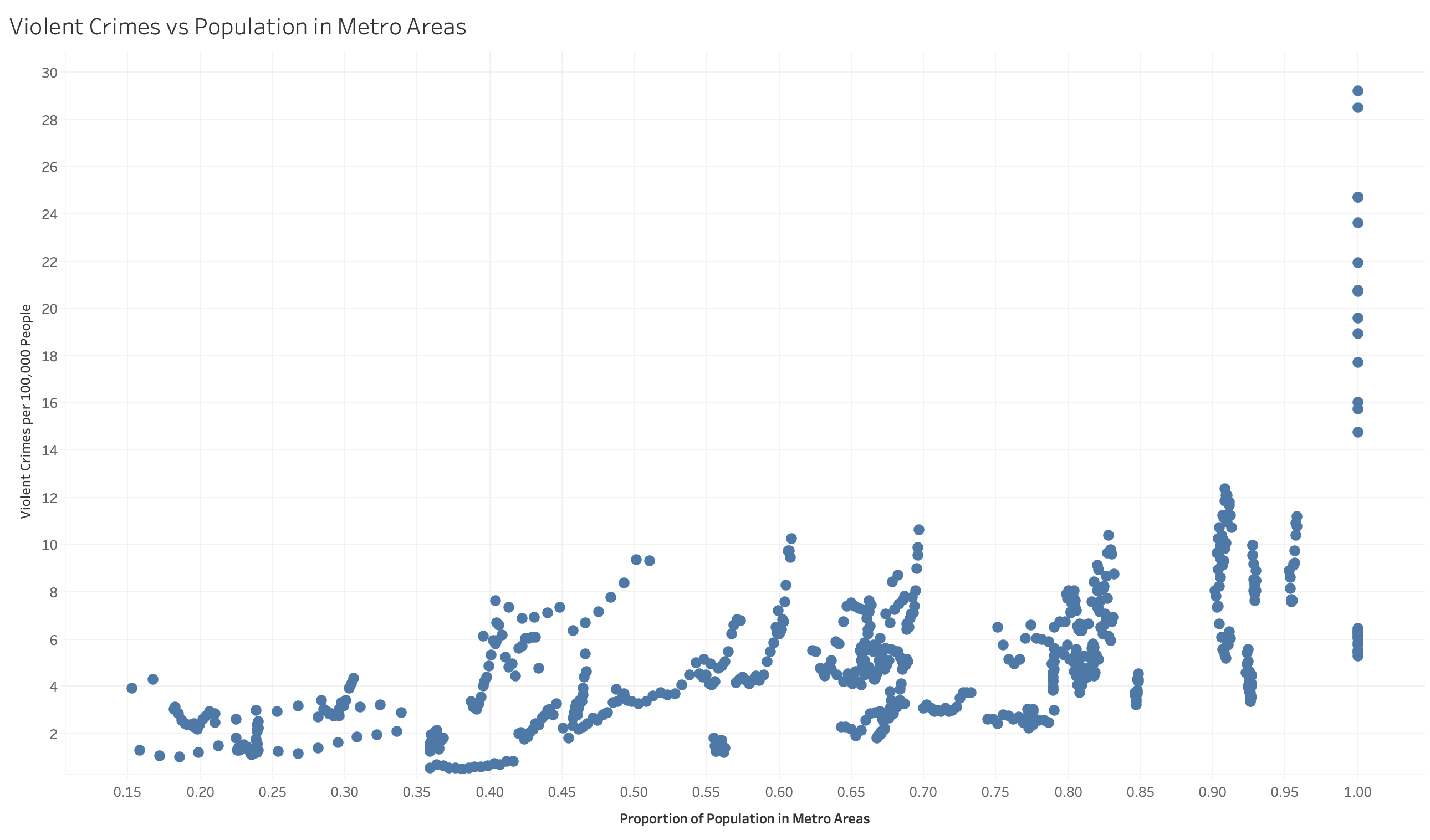
Exploring Links Between Economic Status and Crime
Exploring Links Between Economic Status and Crime was a research paper I co-wrote my junior year for my Economic Statistics course. This paper was my first dive into statistics and data analysis. The data examined is from a dataset on prison populations and crime rates available through a Boston College database.
Crime has been the center of plenty of political and social debates, especially within the last few years. This was our motivating factor to examine crime data first-hand and potentially debunk any misconceptions on how economics and crime are related. In our efforts to examine if economic status is truly inversely related to crime, our statistical and graphical models informed us that the percent concentration of a population in metropolitan areas and unemployment rates are the two most useful statistics to predict crime rates, while income may actually be an ineffective predictor.
All data analysis for this project was done using Stata. The primary tool used to dentify the most important factors contributing to crime rates were logistic regressions. Several regressions were run to view the magnitude of effect of our independent variables. Other statistical analysis methods used were t-tests, the creation of confidence intervals, and correlations. Though Stata was very helpful to initally analyze the data, it falls short in the data visualization department. In order to add more compelling graphics to the paper, some of the graphs were re-made in Tableau.